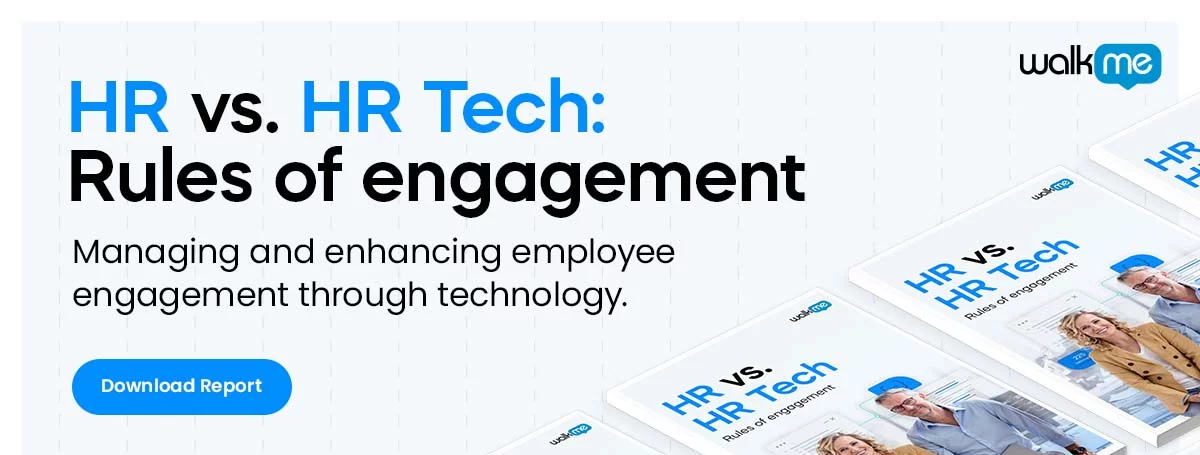
A digital offboarding checklist can simplify the employee offboarding process – and having one is practically a necessity in the modern workplace.
In this post, we’ll cover some of the most important items to include in your digital offboarding checklist, focusing on three key areas:
- Communication
- Security
- Administrative
This checklist, incidentally, should be included as part of your main employee offboarding checklist. That template should include the most important action items to focus on during offboarding, such as:
- Exit interviews/surveys
- Finalizing paperwork
- Scheduling the hand-off of work duties
- Returning equipment
See our change management blog for more detail on the overall offboarding process.
Now, let’s look at the most important points to include in the digital offboarding process.
A Digital Offboarding Checklist
Here are a few of the biggest areas to focus on during the digital offboarding process – regardless of whether that occurs remotely or onsite.
First, however, it’s necessary to have the right tools.
Here are a few that can be useful:
- Video conferencing applications can be used for conducting exit interviews remotely
- Messaging apps, including unified communication solutions, can be used to send out messages at specific times, such as reminders to perform certain actions
- Employee survey apps can be used to conduct exit surveys in lieu of or in addition to exit interviews
- Project or task management tools can be used to coordinate activities among those who will be offboarding employees, such as IT and HR
- HR software often include many features useful for offboarding, such as workflow templates, survey functionality, and self-service portals
- Digital signature apps can be used to process paperwork
- Self-service apps, such as DAPs, can be used as help centers, to automate offboarding workflows, and more
Not all of these tools are necessary, of course, but the more one has on hand, the easier it will be to conduct the digital offboarding process.
Communication
Communication is essential to any offboarding process and much of it will occur digitally.
Here are a few items to include in your digital offboarding checklist:
- Check in with employees during the weeks leading up to their departure
- Send notices to employees about deadlines for completing paperwork, returning equipment, conducting the exit interview, final meetings with management, and other relevant activities
- Set up and conduct an exit interview either offline or online, which will be a necessity for fully remote workers
- Send broadcasts or emails to other coworkers to inform them of the employee’s departure
- Communicate with the employee’s replacement to coordinate their onboarding activities with the employee’s offboarding activities, if relevant
Streamlined communication is essential to the offboarding process, or any other HR process, for that matter.
It is therefore essential not only to have the right digital tools, such as those covered above, but to have standardized processes that relevant parties are aware of.
Using project management applications or similar collaboration tools, as mentioned, can be a good way to stay coordinated and efficient.
IT and Security
IT plays an important role in ensuring that no security holes are left open during departure. Depending on the size of the organization, it may also be necessary to collaborate with other departments, such as corporate security.
Here are a few of the most important IT-related offboarding tasks to include:
- Change passwords promptly upon the employee’s departure
- Close IT accounts immediately after the employee has ceased their duties
- Restrict building access if relevant
- Obtain relevant equipment, such as ID cards or IT hardware
It is critical to perform these actions without delay. While in most instances there will be little concern over a breach, it is always best to adopt a zero-trust security model.
Administrative
Last but not least, it is necessary to perform a few administrative and managerial tasks to ensure there are no loose ends.
Here are a few items to add to your digital offboarding checklist:
- Update databases, such as the employee database and financial accounts
- Remove employee information from both external websites and internal websites
- Update documentation that may include the employee’s specific name, such as business plans that reference that employee by name
- Have employees transfer knowledge to successors by training employees, documenting workflows, creating software walkthroughs, and otherwise preserving best practices
- Update workflows that rely upon that employee or, if the job position has not yet been filled, that job role
Oversights during this part of the offboarding process can become an irritant for existing teams or future new hires, so it is important not to leave anything out. Every record should be updated and modernized as much as possible.
Final Tips
Here are a few final suggestions for improving the digital offboarding process:
- Standardize and document the process to reduce the risks of errors and oversights
- Use and reuse a template, such as a checklist inside a project management app, to simplify the process
- Consolidate your digital tools as much as possible to simplify workflows – for instance, by using a unified communication system instead of several different communication tools
- Compile exit interview and survey data inside analytics applications and dashboards to gain deeper insight into the business and employees’ concerns
Finally, it will be helpful to remember that the offboarding process is like any other process – the more it is optimized and improved upon, the more value it will add to the business.
WalkMe Team
WalkMe spearheaded the Digital Adoption Platform (DAP) for associations to use the maximum capacity of their advanced resources. Utilizing man-made consciousness, AI, and context-oriented direction, WalkMe adds a powerful UI layer to raise the computerized proficiency, everything being equal.



